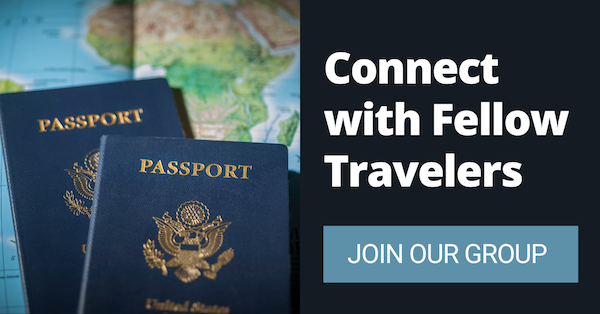
Your Ultimate Guide to Road Tripping Like a Pro
By: Frayed Passport
Skip to Section
- Article Summary
- Strategic Route Planning That Balances Structure and Spontaneity
- Vehicle Preparation: Beyond the Basic Oil Change
- Packing Strategies: Accessibility, Organization, and Efficiency
- Budget Management: Controlling Costs Without Cutting Fun
- Travel Companions: Making Group Dynamics Work
- Safety Protocols and Precautions
- Ready to Travel?
Article Summary
A successful road trip isn’t about luck — it’s about smart planning, flexible scheduling, and knowing how to prepare both your vehicle and your expectations. This guide walks you through everything that actually matters.
This in-depth breakdown covers every aspect of road travel, whether you’re going solo or with a crew. You’ll get tools and tactics for route planning, car prep, packing efficiently, budgeting wisely, and staying safe on the road. It goes way beyond “snacks and playlists” territory and straight into the kind of advice that helps you avoid costly, annoying, or dangerous detours.
- Build a flexible route that includes buffer days and scenic detours without running you ragged.
- Prep your car like your trip depends on it — because it does. Think brakes, belts, and back-up plans.
- Organize your gear into zones so you’re not digging for Tylenol or rain jackets when you need them.
- Manage your money like a pro with fuel-saving tactics, discounted attractions, and realistic food budgets.
- Sort out group dynamics before you leave — fewer headaches, fewer passive-aggressive Spotify fights.
Road trips give you the freedom to explore on your own schedule, set your own pace, and change plans whenever inspiration strikes. With the windows down, music up, and an open road ahead, you control your adventure in a way no other type of travel allows.
The difference between a fantastic road trip and a stressful one comes down to planning and preparation. This guide walks you through everything you need to know to confidently hit the road, handle unexpected situations, and create unforgettable memories.
Strategic Route Planning That Balances Structure and Spontaneity
The best road trips combine thoughtful planning with room for unexpected discoveries.
Plotting Your Perfect Path
Start by plotting your “must-see” destinations on a map. Google Maps, Roadtrippers, and other specialized apps allow you to add multiple stops and see driving times between points.
Limit daily driving to four to six hours, which gives you time to stop, explore, eat, and arrive at your overnight destination before dark. Eight-hour driving days might look doable on paper but will be exhausting (and you’ll miss out on some very cool stops!).
Plan your overnight stops first, then fill in points of interest between them. Anticipating stops might help you enjoy your trip even more – you’ll get a psychological boost each time you reach a planned waypoint.
Building in Buffer Days
Add at least one buffer day for every five to seven days of travel. Flexible days are insurance against bad weather, unexpected closures, car troubles, or just…falling in love with a place and wanting to stay longer!
You’ll appreciate that extra day if the weather’s perfect at the Grand Canyon. If not, you can move on without regret.
Leveraging Tourism Websites and Visitor Centers
State tourism websites usually have pre-planned road trip itineraries covering different regions and themes. These routes typically include lesser-known attractions that might not appear in standard travel guides (check out these guides and ideas from Visit Florida, for example).
Once on the road, state welcome centers and local visitor bureaus can provide you with free maps, brochures, and personalized recommendations. Staff at these centers know about road closures, current conditions at attractions, and upcoming local events that you should see.
Alternative Routes and Scenic Byways
Highways get you places fast, but America’s 184 National Scenic Byways and All-American Roads provide the views and experiences you’ll remember. Apps like Scenic help identify gorgeous alternatives to major highways, only adding minimal extra driving time but vastly improving the quality of your journey.
Vehicle Preparation: Beyond the Basic Oil Change
Your vehicle is your home, transport, and safety net during a road trip. Preparing it properly will pay dividends in peace of mind.
Professional Inspection Checklist
Two weeks before your departure, have a mechanic check these systems:
- Brakes
- All fluid levels and quality
- Battery health and connection tightness
- Tire tread depth, wear patterns, and proper inflation
- Belt and hose condition
- Air filter cleanliness
- Suspension components
This inspection might seem expensive to do, but it’ll prevent much costlier problems on the road. Make sure to keep the receipt in your glove compartment – it proves maintenance if you need warranty service during your trip.
DIY Maintenance Tasks
Even with a professional inspection, handle these tasks yourself:
- Clean your headlights to maximize nighttime visibility
- Replace worn wiper blades
- Check and adjust tire pressure after consulting your vehicle’s recommended PSI
- Test all exterior lights
- Vacuum and clean the interior to start fresh
- Remove unneeded items that can add weight and reduce fuel efficiency
Emergency Kit Assembly
Pack these items in an easily accessible container:
- Jumper cables or portable jump starter
- Basic tools, like screwdrivers, pliers, and an adjustable wrench
- Tire pressure gauge
- Flashlight with extra batteries
- Reflective warning triangles
- First aid kit with pain relievers, bandages, antiseptic
- Fire extinguisher (small, automotive-rated)
- Extra fuses matching those in your vehicle
Tech Tools Worth Installing
These digital tools enhance safety and convenience:
- Dashcam: Documents accidents and scenic drives
- Bluetooth OBD-II scanner: Connects to your phone and decodes check engine lights
- Tire pressure monitoring system: Gives real-time alerts about tire pressure issues before they cause blowouts
Packing Strategies: Accessibility, Organization, and Efficiency
Packing for road trips is its own thing – it’s a bit different from putting everything in one suitcase and grabbing as you go. Here’s how to do it right!
The Zone System
Divide your gear into zones:
Passenger Zone: Items you need while driving
- Snacks, water bottles, hand sanitizer
- Phone, chargers, sunglasses
- Trip itinerary and physical maps
- Day bag with essentials for quick stops
Trunk Zone 1: Items needed at rest stops or scenic viewpoints
- Light jackets or sweaters
- Camera gear
- Hiking boots if exploring trails
- Cooler with drinks and perishable snacks
- Picnic blanket
Trunk Zone 2: Items needed only at overnight destinations
- Clothing bags or suitcases
- Toiletries
- Shoes besides those worn while driving
- Gear for specific planned activities
Using clear storage bins with labels helps keep zones organized. Soft-sided bags conform better to irregular trunk spaces than hard suitcases.
Clothing Selection and Packing
Pack clothing that:
- Resists wrinkles
- Layers easily for temperature changes
- Works in multiple outfit combinations
- Dries quickly if you need to wash items in hotel sinks
The “5, 4, 3, 2, 1” method works well for week-long trips:
- 5 pairs of socks and underwear
- 4 tops
- 3 bottoms
- 2 pairs of shoes
- 1 jacket/sweater
And remember to roll your clothes rather than folding them to save space.
Food and Kitchen Supplies
Cooler management:
- Use frozen water bottles instead of ice – they last longer and don’t melt into a mess
- Pack items you’ll eat first on top
- Keep a separate beverage cooler that gets opened more frequently
- Consider a higher-end cooler for trips over 5 days – they maintain temperature much longer
No-refrigeration staples:
- Trail mix, nuts, beef jerky
- Peanut butter, honey
- Granola and breakfast bars
- Dried fruit
- Bread, bagels, tortillas
- Instant oatmeal packets
- Tuna or chicken in pouches (not cans)
Cooking gear for scenic meal breaks:
- Portable stove (butane canister types are the most user-friendly)
- One pot, one pan
- Cutting board
- Good knife in a protective sheath
- Plate / bowl combo for each person
- Eating utensils and basic cooking utensils
- Biodegradable soap
Budget Management: Controlling Costs Without Cutting Fun
Without careful tracking, road trip expenses can very quickly spiral beyond your expectations. Here are a few pointers to stay on track.
Pre-Trip Cost Estimation
Creating a comprehensive budget spreadsheet before departure will save you major headaches on the road. Start by documenting your fixed costs – items you’ll pay for regardless of how your trip unfolds. These include vehicle rental fees if you’re not using your own car, all accommodation reservations made in advance, activity tickets purchased before departure, and travel insurance premiums. These expenses are the foundation of your trip budget – a good rule of thumb is to get these to represent 40-60% of total trip costs.
Next, calculate your anticipated variable costs, which will change based on your daily choices. Fuel will probably be your most significant variable expense, so take time to estimate it accurately!
Here’s how to do it quickly: multiply your planned mileage by your vehicle’s average MPG, then divide by current gas prices along your route. Add a 10% buffer for detours and idling.
Break down food costs into a daily allowance, distinguishing between grocery stops and restaurant / fast food meals. Account for often-forgotten expenses like parking fees, which can add up quickly in urban areas, and entrance fees for attractions you’ll visit. Set a reasonable souvenir budget upfront to prevent impulse purchases. And finally, allocate 15% of your total budget as an emergency fund for unexpected vehicle repairs, weather reroutes, or spontaneous excursions.
Money-Saving Booking Strategies
Smart hotel booking can dramatically reduce road trip costs without sacrificing comfort or convenience. For hotels and motels, always check rates on third-party booking sites, but then call the property directly to book. Most hotels will match or even beat online rates to avoid paying commission fees to booking platforms. Position yourself strategically by staying slightly outside major tourist centers. Properties just 15 minutes from popular attractions frequently charge 30-40% less than their centrally-located counterparts while adding minimal inconvenience to your itinerary. Join hotel loyalty programs even for short stays – these points accumulate across trips and eventually translate into free nights. When comparing similar properties, prioritize hotels offering substantial free breakfasts and in-room refrigerators, which cut down your daily food costs.
Outdoor accommodation options provide even greater savings opportunities. National Forest campgrounds typically charge about $15 to $40 per night, comparable (if not somewhat cheaper) to state parks – though they offer fewer amenities and sometimes operate on a first-come, first-served basis.
Have a campervan? Finding the right RV park can help save a ton of money – many offer significant weekly rate discounts that reduce your nightly cost by 20% or even more when staying six nights or longer.
Consider joining membership programs like Harvest Hosts, which starts at about $150 annually but allows free overnight parking at hundreds of wineries, farms, and attractions nationwide (purchases are encouraged). For western states road trips, familiarize yourself with Bureau of Land Management (BLM) land regulations, which permit low-cost (and sometimes free) camping in many areas with typically 14-day maximum stays, providing an authentic outdoor experience with very low accommodation costs.
Fuel Efficiency Techniques
Fuel costs constitute a major portion of road trip expenses, but simple adjustments to your driving habits and planning can improve your vehicle’s efficiency by a lot! Maintaining a moderate highway speed makes a surprising difference – driving 60-65 mph instead of 75-80 mph can improve fuel economy by up to 20% in most vehicles while adding minimal time to your daily travel. Use cruise control consistently on flat terrain to maintain steady speeds and avoid the inefficient acceleration / deceleration cycles that occur with manual throttle control. Establish a routine of checking tire pressure every three days, as underinflated tires dramatically increase fuel consumption, and proper inflation alone can save 3-5% on gas.
Pay attention to your vehicle’s configuration during your journey. Remove roof cargo boxes when you’re not transporting bulky gear, as these accessories create significant drag that reduces highway fuel economy. Minimize idling whenever you can by turning off the engine during stops longer than a minute. Use apps like GasBuddy to locate the cheapest fuel prices along your route for fuel purchases. Strategic planning allows you to schedule fuel stops at membership retailers like Costco or Sam’s Club, which typically price gas 10 to 25 cents per gallon lower than standard stations. These practices can save a typical road tripper $50-150 in fuel costs on a weeklong journey!
Activity and Attraction Discounts
Attraction admission fees can quickly inflate your road trip budget, but savvy planning cuts these costs substantially without sacrificing experiences. The America the Beautiful National Park annual pass represents one of the best values in travel at $80, covering entrance fees at over 2,000 federal recreation sites nationwide. This pass pays for itself after visiting 3-4 major national parks, where standard parking fees range from $20-35 per vehicle. State tourism websites can be goldmines for savings, with downloadable or mailable coupon books with discounts on regional attractions, restaurants, and even accommodations.
Membership affiliations unlock additional savings opportunities that many travelers overlook. AAA, AARP, military ID holders, and students can access discounts ranging from 10-25% at thousands of attractions nationwide, though you’ll need to specifically request these discounts as they’re rarely advertised prominently. Research museum admission strategies before arriving in major cities, as many institutions offer free admission days once weekly or monthly or reduced-rate evening hours that deliver identical experiences at a fraction of daytime admission costs. Before departing, search deal sites like Groupon for each major stop on your itinerary, filtering by location to find activity discounts in cities you’ll visit. Purchase these vouchers in advance, adding entertainment options to your trip at 40-60% below standard pricing.
Travel Companions: Making Group Dynamics Work
Obviously, the people sharing your vehicle impact your road trip experience. Here’s how to navigate those group dynamics!
Pre-Trip Expectation Setting
Proactive, clear communication before your journey will go a long way toward preventing the most common road trip conflicts. Set up a pre-trip meeting with all travelers to discuss daily scheduling preferences, starting with whether your group will embrace early morning departures or more leisurely starts. Set up ways to share music and podcasts – perhaps rotating DJ privileges daily or splitting driving shifts with entertainment choices. Discuss stop frequency expectations – bathroom breaks, smoking habits, and photography interests might vary dramatically between your fellow travelers and can build into resentment when unaddressed.
Financial discussions might feel awkward, but they’re absolutely needed! Clearly outline the group’s budget limitations, determining how you’ll handle cost sharing for fuel, housing, and meals before collecting any money. Address activity preferences honestly, gauging interest levels for tourist attractions versus off-beat experiences so no traveler feels consistently dragged to places they find boring. Establish photography expectations, particularly if some travelers want frequent photo stops while others prioritize making progress. Put together food preferences and dietary restrictions, planning meal stops that meet everyone’s needs. Finally, discuss how you’ll handle personal space and quiet time, especially for introverts who may require occasional solitude to recharge during intense group travel.
After these discussions, document major decisions in writing – not as a formal contract, but as a reference point to prevent later disagreements about “what we agreed to.”
Task Division Strategies
Distribute responsibilities between each traveler – this lets everyone feel invested in the journey while preventing resentment over uneven workloads. Set up a rotation system where each person assumes different roles throughout the trip, rather than pigeonholing anyone into permanent assignments. Shift navigation duties regularly and designate daily cooler and snack managers responsible for inventory, ice maintenance, and equitable distribution during driving stretches.
Share accommodation research and booking tasks, especially for the unplanned segments of your journey, assigning different travelers to research options and present the best choices to the group. You can rotate restaurant research, too – make sure to keep everyone’s preferences for food and budget in mind! Establish a schedule for cleaning up accumulated chip bags and clutter, with regular trash removal, windshield cleaning, and interior organization duties shifting between travelers. And, of course, create a driving shift schedule that accounts for individual preferences and abilities while making sure no single person shoulders an unfair proportion of behind-the-wheel time.
Solo Road Trip Considerations
Solo road trips give you unmatched freedom but come with additional safety precautions. Before leaving, establish a reliable communication system with someone at home, sharing your detailed daily route before departure – and remember to check in consistently once you’re on the road. This accountability system will give you a safety net – if you miss a check-in, your contact person knows exactly where to start if they need to contact help. Get comprehensive roadside assistance through programs like AAA, which will give you peace of mind through services you might not need but that you’ll really appreciate if they crop up, like towing, battery jumps, and lockout assistance.
Vehicle maintenance becomes even more important when traveling alone, as you lack backup drivers or assistance during breakdowns. Schedule a thorough pre-trip inspection and stay attentive to warning lights, unusual sounds, and performance changes during your journey. For remote area travel, consider a personal locator beacon or satellite messenger device that enables emergency communication beyond cell service range. Make hotel choices with security in mind, selecting properties with interior room entrances only, good lighting, and visible security measures.
Modify your stopping patterns when solo, using official rest areas, welcome centers, and populated service stations rather than isolated scenic pulls, particularly for bathroom breaks or short naps. Adjust your driving schedule to acknowledge that fatigue accumulates faster without a conversation partner – some solo travelers find their maximum safe driving window is a couple of hours shorter than when traveling with companions. Plan daily distances accordingly, even if it means extending your overall journey by a day or two.
Safety Protocols and Precautions
Strategic safety planning keeps your road trip on track. Here’s what to look out for!
Navigation Backup Systems
Relying exclusively on cell phone data for navigation is one of the most common road trip mistakes – it leads to incredibly stressful situations when signal strength falters or goes away completely. Create a multi-layered navigation system beginning with proactive offline map downloads. Before you leave (and while you’re on a good wifi connection), use Google Maps to download complete state maps covering your entire route, enabling turn-by-turn directions even when your phone shows “no service.” Supplement digital navigation with physical road atlases and detailed state maps, which provide broader context than the limited view on phone screens and never suffer from battery depletion or software glitches.
Prepare for particularly complex navigation segments by taking screenshots of critical junction directions, ensuring this information remains accessible regardless of connectivity. During your initial route planning, identify physical landmarks corresponding with major navigation points, noting distinctive buildings, geographic features, or businesses that signal upcoming turns. For journeys into particularly remote regions, consider investing in a dedicated GPS unit with preloaded maps and longer battery life than smartphones typically have. This layered approach transforms navigation from a potential vulnerability into a reliable system that functions under all conditions.
Health and Wellness Practices
You want your road trip to be energizing and fun – not exhausting and neverending.
Incorporate regular movement breaks into your driving schedule, stopping every two to three hours for at least five minutes of stretching and walking. Focus on your hips, lower back, and neck muscles, which you might not notice tighten a lot during extended sitting and contribute to post-driving pain and stiffness. Getting out to stretch also stimulates circulation, reducing the risk of blood clots that can develop during long sedentary periods.
Maintain meticulous medication management by packing all prescription drugs in their original labeled containers rather than convenience pill organizers, which may create complications at state borders. Carry printed copies of prescriptions and your doctor’s contact information for emergency refills. Before departure, research urgent care and hospital locations along your route, saving several options directly to your phone for quick access in unexpected situations. Keep health insurance cards and emergency contact information in your wallet and your vehicle’s glove compartment.
Combat the deceptive dehydration caused by continuous air conditioning by following a regular drinking schedule rather than only when you feel thirsty. And even if you don’t usually experience motion sickness, try to pack non-drowsy remedies, as winding roads combined with fatigue can trigger unexpected symptoms that derail your carefully planned itinerary.
Vehicle Security Measures
Your vehicle serves as both transportation and temporary home during road trips, making its security fundamental to your journey’s success. Establish strict protocols for managing valuables, removing all tempting items from sight whenever you park. Even empty bags or charging cables signal to potential thieves that more valuable items might be hidden in the vehicle. For longer stops at scenic viewpoints or hiking trailheads, use retractable locking cables to secure coolers and exterior containers to your car, deterring the quick-grab thefts that frequently occur at popular tourist stops.
Develop strategic parking habits, selecting well-lit spaces visible from your hotel room window when possible. Corner spots against walls reduce access points to your vehicle while providing better visibility. Before departure, thoroughly document your vehicle by taking date-stamped photos from all angles, close-ups of your license plate, and any existing damage. This documentation will be invaluable for insurance claims if your vehicle sustains damage during your journey. Create backup identification by storing photocopies of your driver’s license, registration, and insurance information separately from the originals, perhaps in your suitcase and secure cloud storage.
Weather Monitoring
Weather conditions can dramatically impact road trip experiences, yet many travelers check forecasts only before departure, missing important developments that could affect safety (and fun!). Check the local weather every morning, and keep on top of storm systems that might develop wherever you’re going.
Locals always have reliable weather knowledge, particularly in regions with microclimates or rapidly changing conditions. Contact park rangers or visitor center staff directly for real-time condition updates when planning visits to natural attractions, as they monitor area-specific patterns and can provide nuanced guidance beyond general forecasts. Pay particular attention to flash flood warnings in desert regions, high wind advisories near coastlines or mountain passes, and winter weather alerts that might affect road conditions.
Maintain flexibility in your itinerary to accommodate weather-based rerouting when necessary. Attempting to push through severe weather rarely proves worth the risk or discomfort involved. Experienced road trippers recognize that adjusting plans in response to weather developments – even when it means losing a planned day at a destination – represents prudent decision-making rather than a disappointing compromise.
Ready to Travel?
The open road awaits with infinite possibilities. With thoughtful planning, the right gear, and a positive attitude, your road trip will deliver the freedom, discovery, and memories that make this form of travel uniquely rewarding.
Happy Travels!
Featured image by Toa Heftiba on Unsplash
Information published on this website and across our networks can change over time. Stories and recommendations reflect the subjective opinions of our writers. You should consult multiple sources to ensure you have the most current, safe, and correct details for your own research and plans.
Frayed Passport is a participant in the Amazon Associates Program, an affiliate advertising program designed to provide a means for sites to earn advertising fees by advertising and linking to Amazon.com. We also may share links to other affiliates and sponsors in articles across our website.




